Abstract
The effect of esterification at the 2′-position of desosamine on the antibacterial activity of erythromycin was investigated by determining the bacteriostatic and bactericidal activities of erythromycin and a number of its 2′-esters on S. aureus and relating these activities to the hydrolysis rates of the esters. These studies, together with comparison of the inhibition of protein synthesis in a cell-free system isolated from S. aureus, lead to the conclusion that 2′-esters of erythromycin are inactive until hydrolyzed. Loss of activity appears to result from inability of erythromycin esters to bind to bacterial ribosomes and thus inhibit synthesis of protein.
Full text
PDF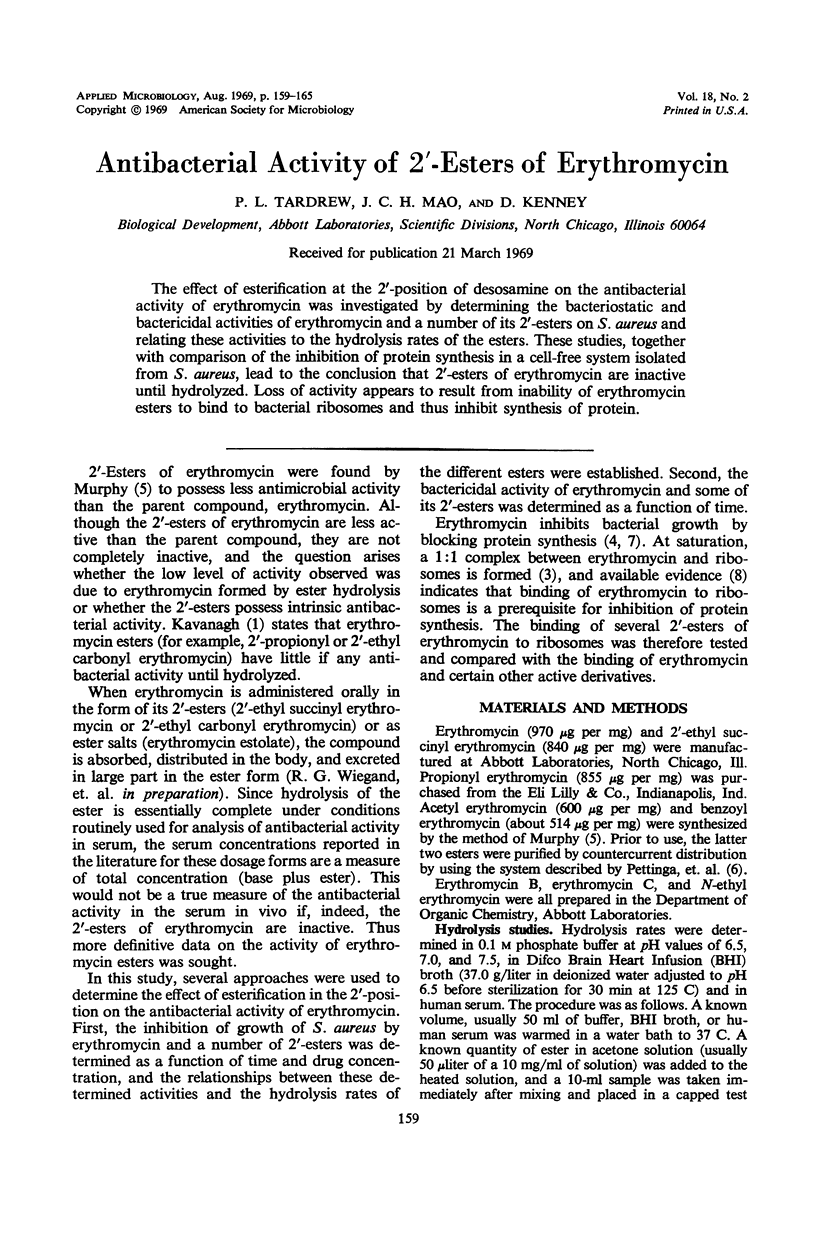

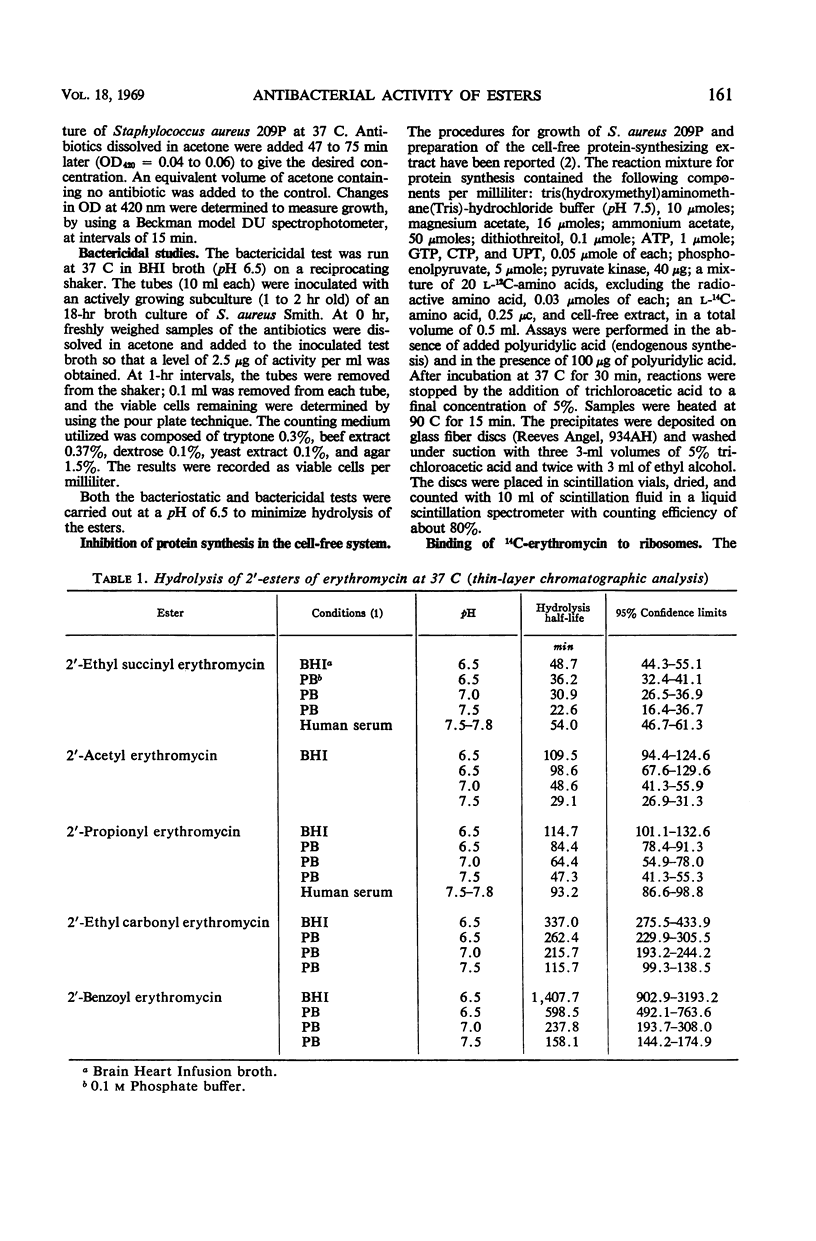
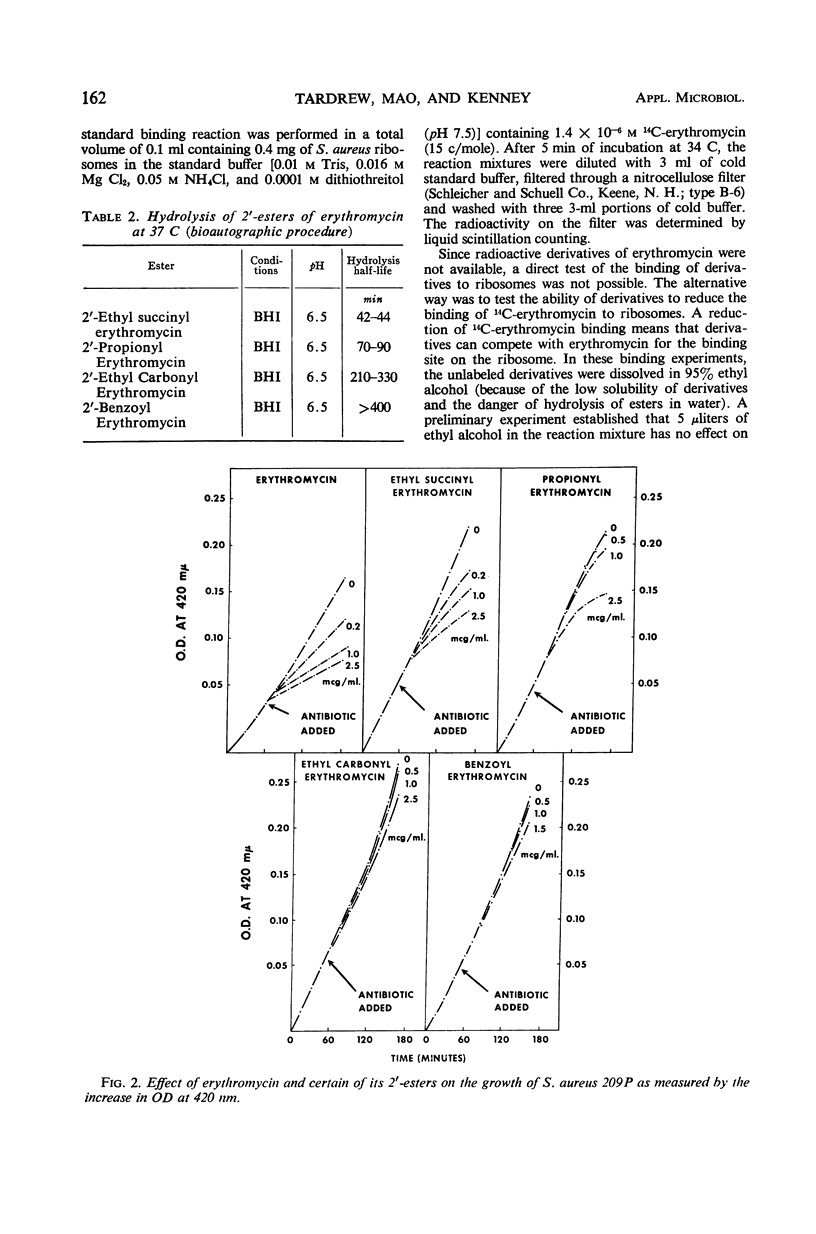
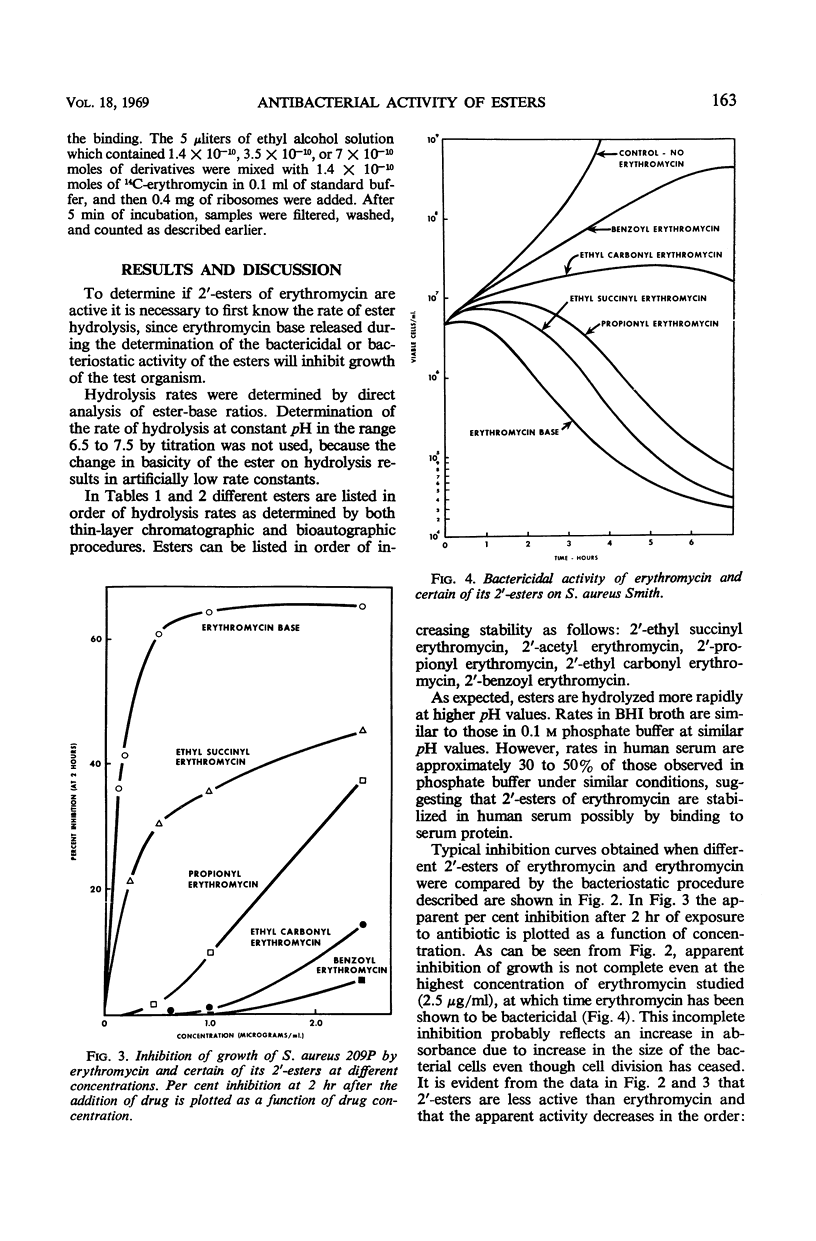
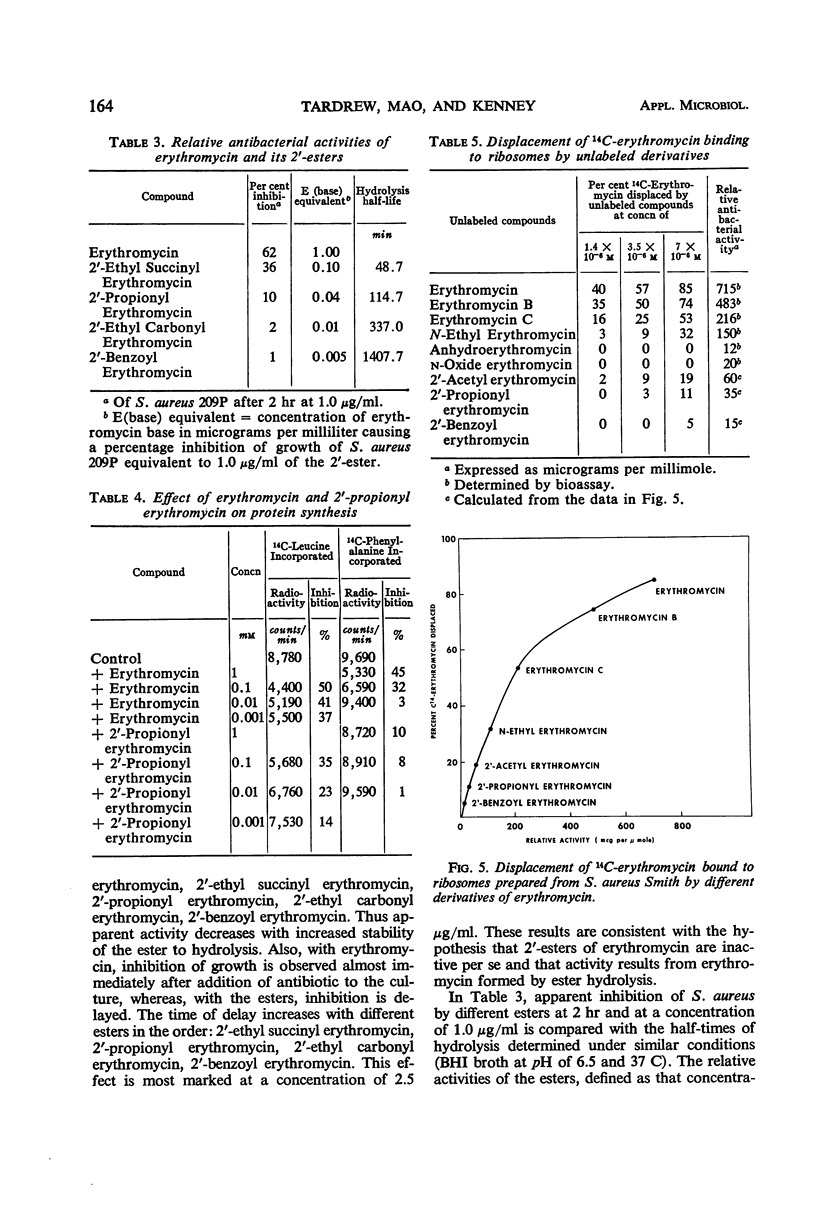

Selected References
These references are in PubMed. This may not be the complete list of references from this article.
- Mao J. C. Protein synthesis in a cell-free extract from Staphylococcus aureus. J Bacteriol. 1967 Jul;94(1):80–86. doi: 10.1128/jb.94.1.80-86.1967. [DOI] [PMC free article] [PubMed] [Google Scholar]
- Mao J. C. The stoichiometry of erythromycin binding to ribosomal particles of Staphylococcus aureus. Biochem Pharmacol. 1967 Dec;16(12):2441–2443. doi: 10.1016/0006-2952(67)90232-8. [DOI] [PubMed] [Google Scholar]
- Mao J. C., Wiegand R. G. Mode of action of macrolides. Biochim Biophys Acta. 1968 Apr 22;157(2):404–413. doi: 10.1016/0005-2787(68)90094-4. [DOI] [PubMed] [Google Scholar]
- TAUBMAN S. B., SO A. G., YOUNG F. E., DAVIE E. W., CORCORAN J. W. EFFECT OF ERYTHROMYCIN ON PROTEIN BIOSYNTHESIS IN BACILLUS SUBTILIS. Antimicrob Agents Chemother (Bethesda) 1963;161:395–401. [PubMed] [Google Scholar]
- Wilhelm J. M., Oleinick N. L., Corcoran J. W. Interaction of antibiotics with ribosomes: structure-function relationships and a possible common mechanism for the antibacterial action of the macrolides and lincomycin. Antimicrob Agents Chemother (Bethesda) 1967;7:236–250. [PubMed] [Google Scholar]


